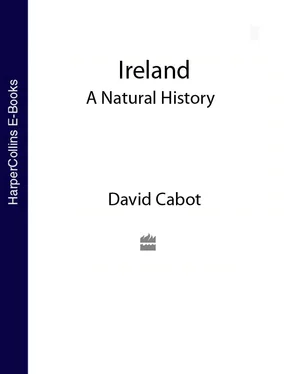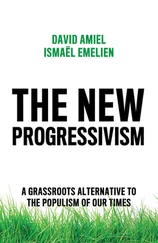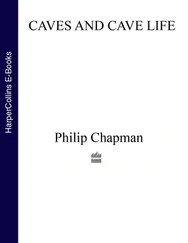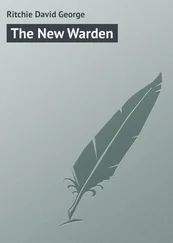David Allardice Webb (1912–95), the doyen of modern Irish botanists, first published An Irish Flora in 1943 (now in its seventh revised edition 1996), 124a small and innocuous-looking volume but full of plant identification tips as well as notes on the habitats and distribution of all Irish species, written in the author’s characteristic taut style. Webb was an outstanding field botanist as well as a brilliant conversationalist.
John J. Moore was the doyen of the Irish school of plant sociologists following the vegetation description methods of Braun-Blanquet. He was also a champion of the conservation of Ireland’s vanishing peatlands, as well as an inspired field worker. Both Moore and Webb represented the finest scientific traditions of the two main cultural strands of Ireland.
Integrated ecological studies of a region are now generally de rigueur, making it difficult for the more traditional floras to survive. However, the past 18 years have seen the publication of The Flora of County Carlow (1979) by Booth (1897–1988) assisted by Scannell; 125 Flora of Connemara and the Burren (1983) by Webb & Scannell; 126 The Flora of Inner Dublin (1984) by Wyse-Jackson & Sheehy-Skeffington; 127 Flora of Lough Neagh (1986) by Harron 128and Synnott’s slim but valuable volume County Louth Wildflowers (1970). 129
One of the greatest polymath naturalists of this century was Frank Mitchell (1912–98). Equipped with a brilliant and creative mind, he was primarily a geologist who branched off into many different fields of natural history. The Chair of Quaternary Studies in Trinity College was especially created to both honour him and capture his talents for the University. His early work on the vegetation history of Ireland was inspired by the Dane Knud Jessen, whom he assisted on Jessen’s first Irish visit in 1934. Mitchell’s many talents culminated in his remarkable book The Irish Landscape (1986) 130which was recently republished for the third time as Reading the Irish Landscape (1997) 22with the archaeologist Michael Ryan as co-author. The critic and writer Eileen Battersby summed up the book as ‘an extraordinary achievement in that this essentially geologically-based text offers a multifaceted and complete view of Ireland. It is a feat no other single narrative has matched.’ 131

Birds of Ireland maintained the high standard set by its predecessor of 1900 and drew upon the combined experience of the four best field ornithologists of the time.
The past 25 years have witnessed a remarkable upsurge in both professional and amateur natural history activity in Ireland. The literature generated by this new generation of naturalists has become increasingly sophisticated, and natural historians, once objects of some curiosity and derision, have at last achieved their just recognition in a rapidly evolving Irish society. 13,20,51,123,126,132–142
2
Biological History
Approximately two million years ago, severe cold conditions developed in northwestern Europe marking the onset of the Pleistocene or Ice Age. At the height of this period, ice sheets smothered Ireland and much of the European Continent, eliminating plants and animals that had evolved throughout the preceding era. When the ice relented it gave way to alternating cycles of warmth and cold spread over the last 750,000 years. The effects were profound. The development of flora and fauna was periodically encouraged only to be inhibited and largely eliminated later, with the result that the plants and animals found in Ireland today are the outcome of a most complex and not fully understood sequence of survival and migration, driven by the climatic oscillations of the Pleistocene.
It was only some 13,000 years ago, at the close of the Ice Age, that the cold began to lift, allowing a progressive development of vegetation and fauna which has continued through to the present day. The activities of the Neolithic farmers commencing some 6,000 years ago inaugurated the first anthropogenic modifications of Ireland’s biotic inheritance. Woodland clearance, initiated by those farmers, brought about many long-term ecological changes including the elimination of some species, redistribution of others and the introduction of alien flora and fauna. This chapter will explore the history and sequencing of Ireland’s vegetational history while detailing what is known about the origins of Ireland’s mammalian fauna and, in particular, highlighting the history of red and sika deer and the wolf. The pedigree of the frog and natterjack toad in Ireland, subject to much speculation, will be explored, along with the history of Ireland’s freshwater fish. Finally the many unresolved questions concerning the origin of some Lusitanian or Mediterranean–Atlantic flora will be considered, as well as the curious geographical distribution of certain plant species, especially in parts of western Ireland.
The Pleistocene or Ice Age
The latter part of the Ice Age, from about 750,000 years ago, has been characterised by a series of alternating warm phases – known as ‘interstadial’ if minor and without the development of closed woodland and ‘interglacial’ when full woodland cover developed – followed by colder phases. The interglacials and interstadials are thought to have been relatively short, in the order of 10,000–15,000 years, with temperatures close to today’s levels which allowed a rich flora to emerge before it was expunged by the next cold phase. The vegetation which developed during these warm periods was generally similar to that found in other parts of Europe, although the record from Ireland is far from complete. 1The cold periods were longer in duration, lasting some 50,000–100,000 years, and ushered in arctic and tundra floras. During the most severe conditions the landscape was covered by ice in varying amounts making it difficult for living things to survive.
This chapter will follow the tentative chronological and stratigraphical sequence of the cold and warm stages of the Quaternary deposits over the past 500,000 years as proposed by Mitchell & Ryan. 2
| Years Ago |
Proposed tentative stratigraphical sequence |
| 13,000–10,000 |
Late glacial |
| 35,000–13,000 |
Midlandian (Drumlin) cold |
| 65,000–35,000 |
Aghnadarraghian mild |
| 79,000–65,000 |
Midlandian (Main) cold |
| 122,000–100,000 |
Fenitian mild |
| 132,000–122,000 |
Eemian warm |
| 302,000–132,000 |
Munsterian cold |
| 428,000–302,000 |
Gortian warm |
| 500,000–480,000 |
Ballylinian warm |
Pollen remains from interglacial deposits
The Ballylinian warm (500,000–480,000 years ago) takes its name from an area south of Castlecomer, Co. Kilkenny, where fossil pollen remains in a 25 m thick deposit of lacustrine clay show that the warm climate allowed the development of open forest containing most of the trees present in Ireland today including fir, spruce, hornbeam, oak, alder, wing-nut (found today in Turkey and present in Ireland from an earlier period) and yew. In the open areas there were grasses and heaths, where rhododendron and many herbs grew. 3
The most famous interglacial deposit in Ireland is of peat and mud lying underneath glacial deposits cut by the Boleyneendorrish River near Gort, Co. Galway. It was first discovered and described by Kinahan in 1865 and was reexamined in 1949 by Jessen, Anderson & Farrington. They investigated the pollen remains in the muds and peat and named this warm interglacial stage the Gortian. 4,5The Gortian interglacial has been uncertainly dated as occurring some 428,000–302,000 years ago. 2About 12 other similarly aged deposits have been so far investigated in Ireland, some of whose results have been reviewed by Coxon, Mitchell & Ryan and Watts. 1,2,6The first plant species to appear at the onset of the Gortian interglacial phase, as summarised by Coxon, were the pioneering willow, juniper and buckthorn as well as many herbs and birch scrub. As the weather became milder the extent of pine and birch woodland grew while many other species – oak, elm, holly and hazel – are thought to have migrated into Ireland from other European ice-free areas. Unlike other interglacial sites examined in Britain, these Irish woodlands did not develop into a mature mixed oak forest but into heath, as increasing wet conditions fostered the growth of heather together with alder, yew, spruce and fir trees. The end result was a crowberry wet heath – to be replaced by tundra again when the Gortian period came to an abrupt end as temperatures plummeted. The next cold stage, the Munsterian, persisted from 302,000–132,000 years ago.
Читать дальше













